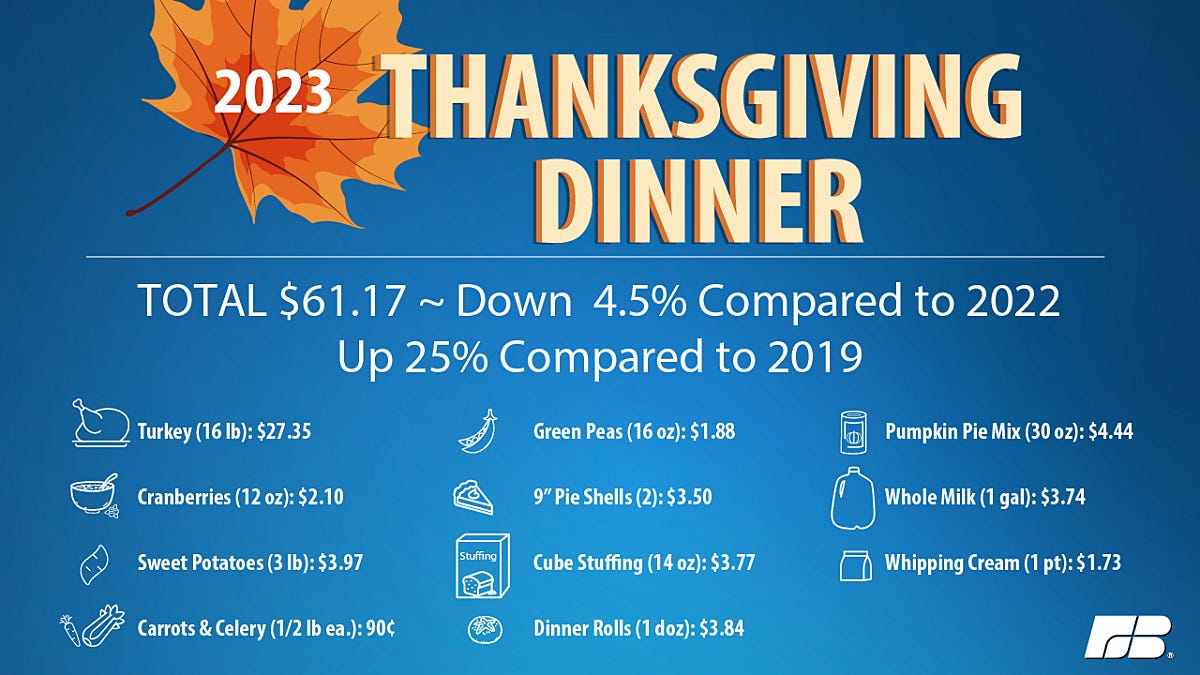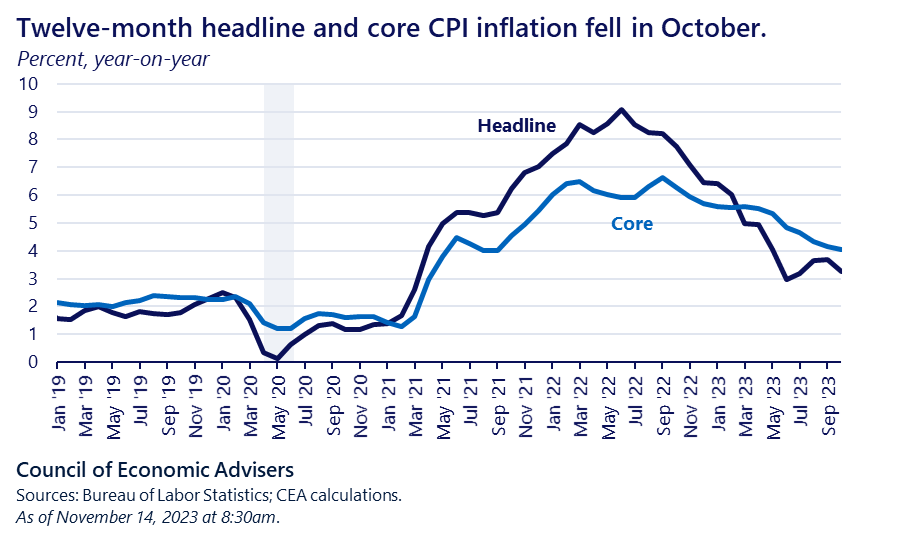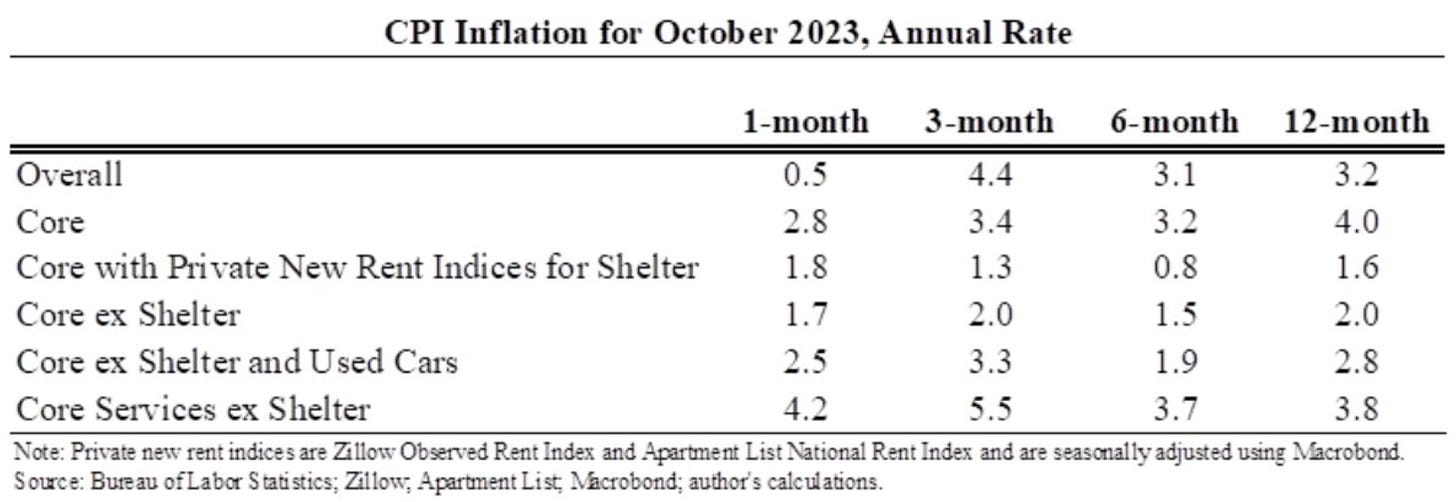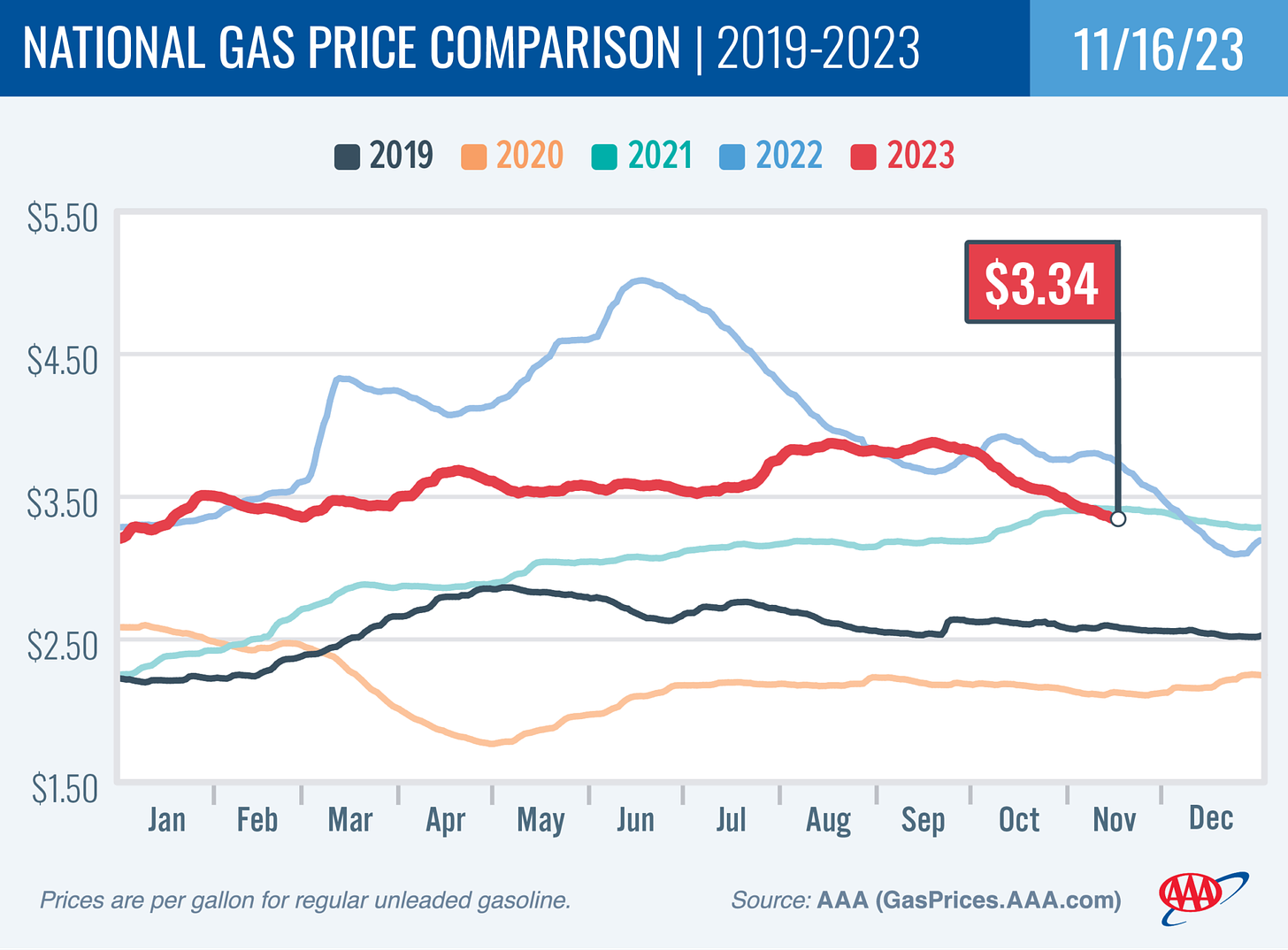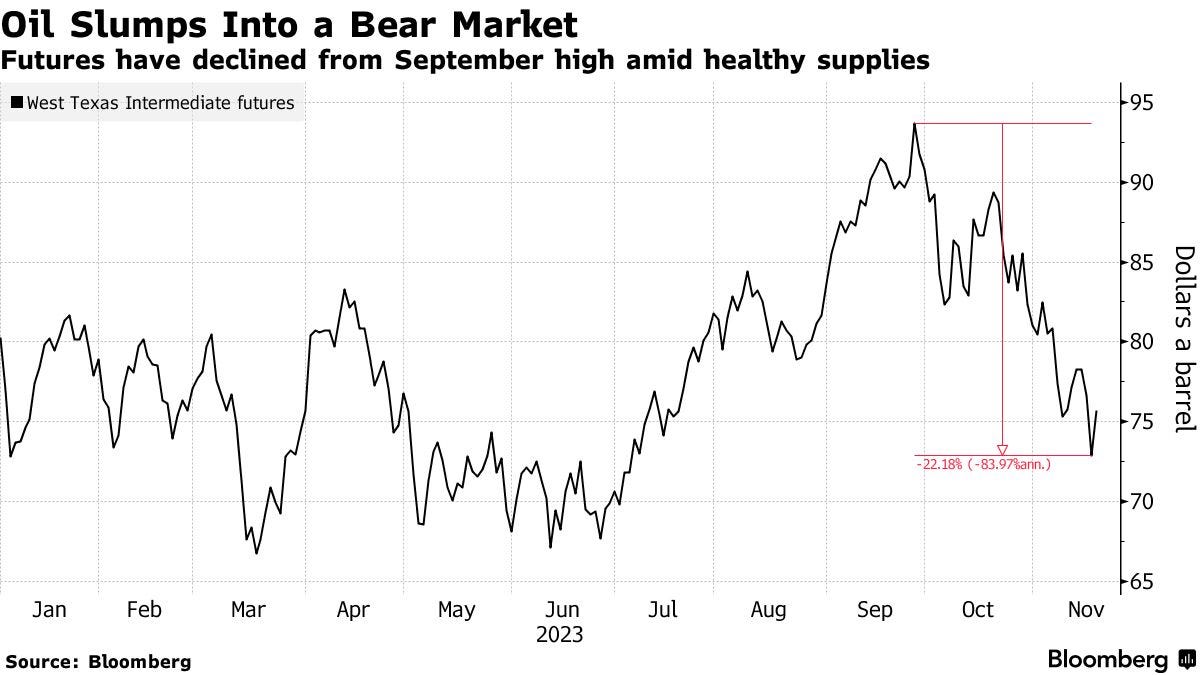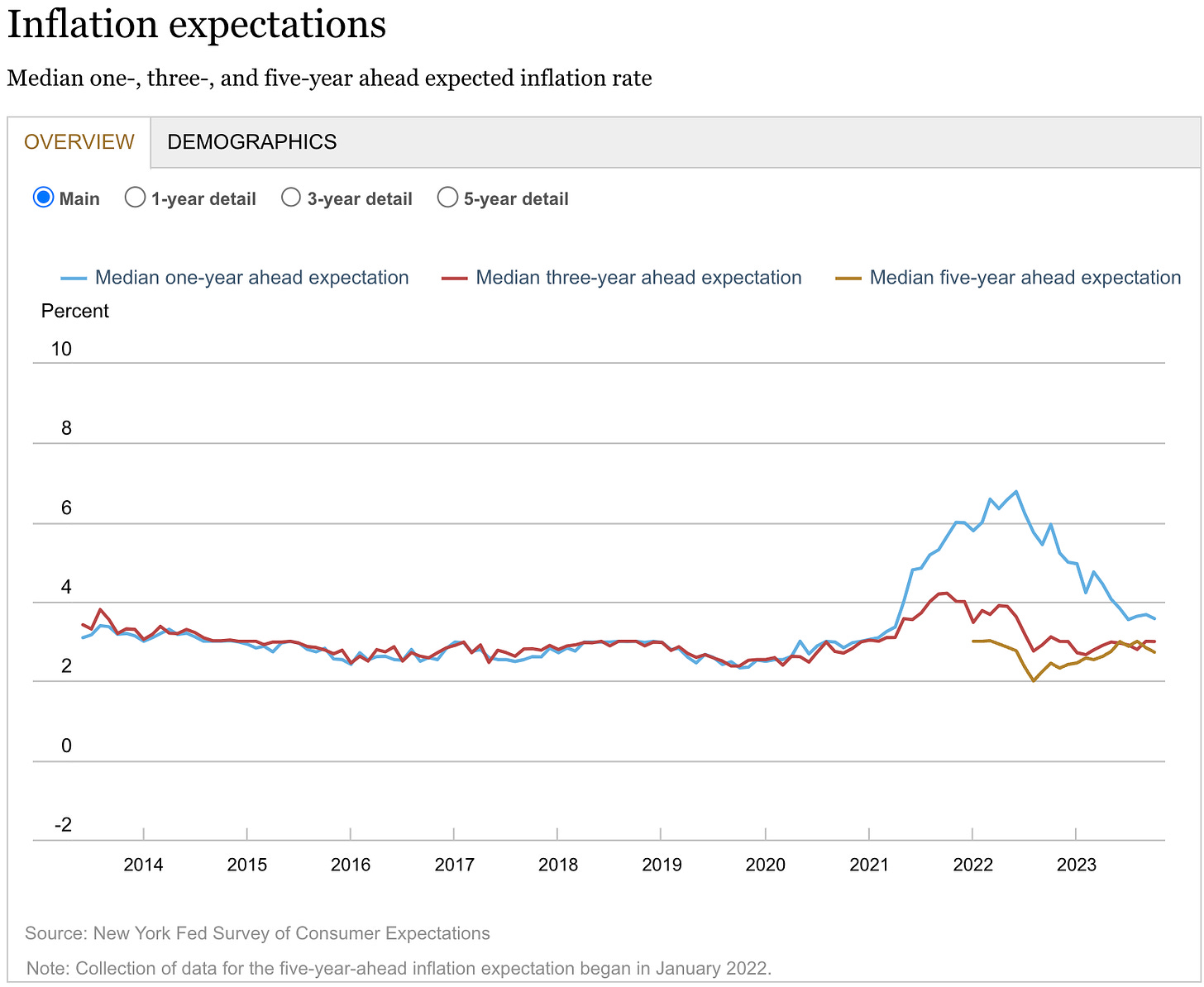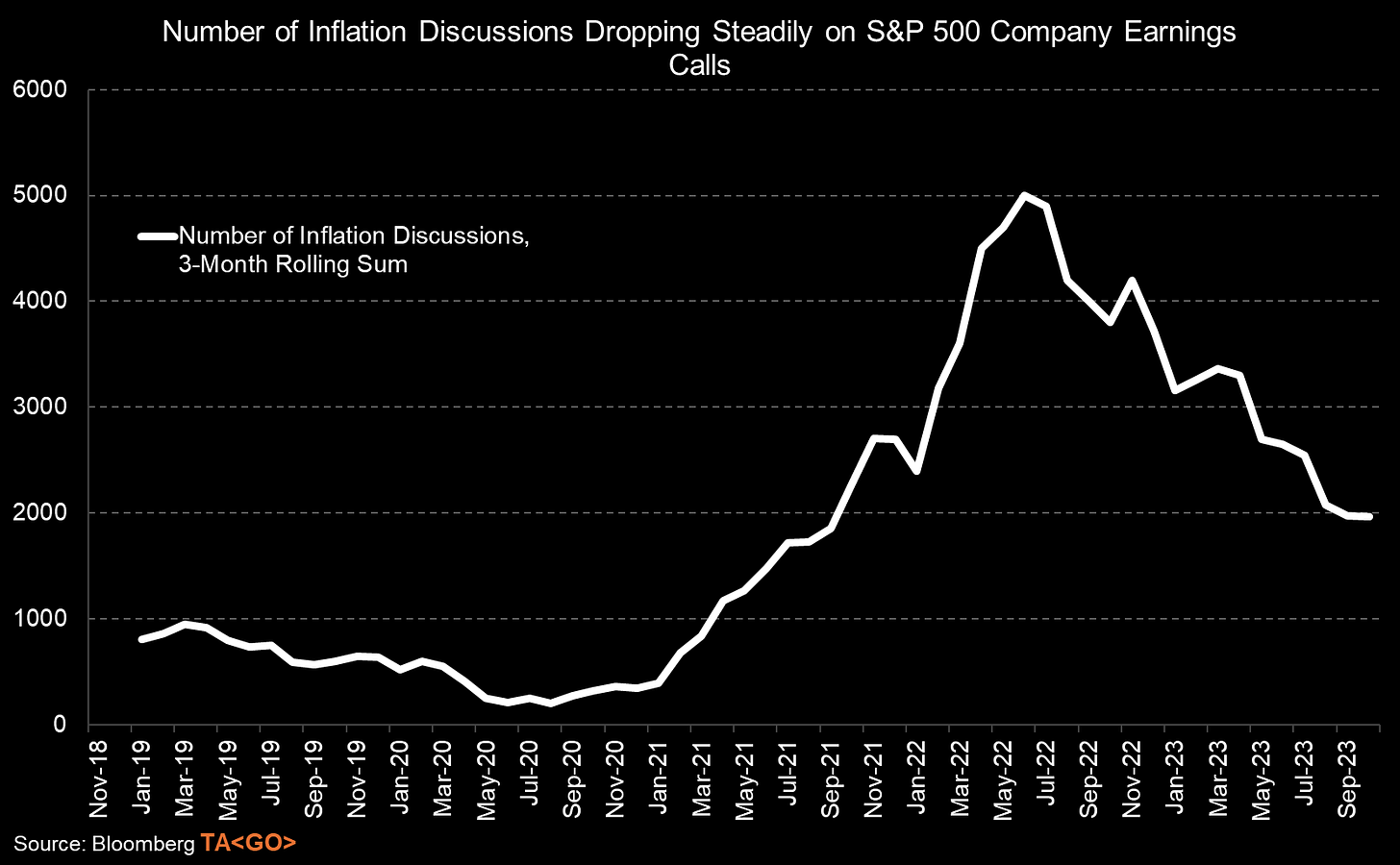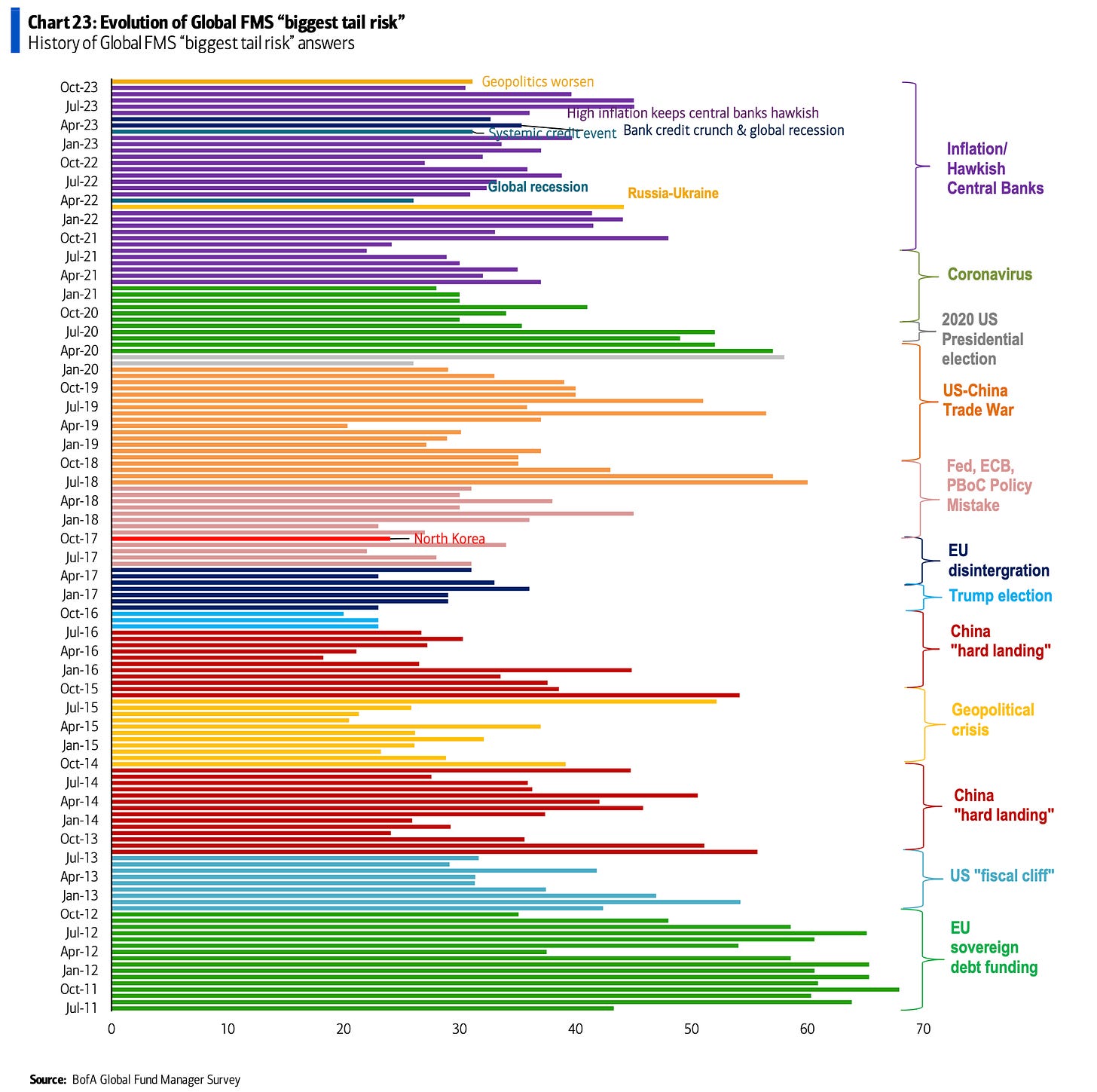Stocks rallied last week, with the S&P 500 climbing 2.2% to close at 4,514.02. The index is now up 17.6% year to date, up 26.2% from its October 12, 2022 closing low of 3,577.03, and down 5.9% from its January 3, 2022 record closing high of 4,796.56.
Here’s some good news: Thanksgiving dinner has become less pricey.
According to the American Farm Bureau, the average cost of a Thanksgiving dinner for 10 costs $61.17 this year, down 4.5% from last year.
“The centerpiece on most Thanksgiving tables — the turkey — helped bring down the overall cost of dinner,” the Farm Bureau observed. “The average price for a 16-pound turkey is $27.35. That is $1.71 per pound, down 5.6% from last year.“
Turkey, stuffing, and cranberry prices are down from a year ago. FB
It’s the latest encouraging development in the Federal Reserve’s long fight to bring inflation down.
While prices for most goods and services aren’t deflating as they are for turkeys, the inflation rates have certainly eased. And, importantly, concerns about prices are receding.
Signs The Inflation Crisis Is Over
According to BLS data released Tuesday, the Consumer Price Index (CPI) in October was up 3.2% from a year ago. Adjusted for food and energy prices, core CPI was up 4.0%, the lowest since September 2021.
Inflation rates are way down from a year ago. (Source: @WhiteHouseCEA)
On a month-over-month basis, CPI was unchanged as energy prices fell 2.5%. Core CPI was up a modest 0.2%. If you annualize the three-month trend in the monthly figures, CPI was rising at a 4.4% rate and core CPI was climbing at a 3.4% rate.
The recent trend in prices is much cooler than they were a year ago. (Source: @JasonFurman)
While many broad measures of inflation continue to hover above the Fed’s target rate of 2%, they are way down from peak levels in the summer of 2022. And the trend suggests they could continue to move lower.
Among the most visible price categories is gasoline, which many consumers confront regularly. And it’s been cooling.
“With Thanksgiving fast approaching (and maybe the in-laws), the national average for a gallon of gas is steadily declining,” AAA observed on Thursday. “Since last week, pump prices have fallen six cents to $3.34. Since the price peak for 2023, the national average has either fallen or remained flat for 60 straight days.”
Gas prices are way down from 2022’s peak levels, and they’ve been cooling further in recent weeks. AAA
This comes as oil prices tumbled by more than 20% from their recent highs.
Oil prices are down by more than 20% from their highs. (Source: Bloomberg)
Indeed, consumers confirm they have taken notice of recent price trends.
From the New York Fed’s October Survey of Consumer Expectations: “Median inflation expectations declined at the one-year and five-year ahead horizons in October, falling to 3.6% from 3.7% and to 2.7% from 2.8%, respectively. Median inflation expectations at the three-year ahead horizon remained unchanged at 3.0%.“
Inflation expectations have come way down. (Source: NY Fed)
This is a marked improvement from June 2022, when consumers were looking for 6.8% inflation in the year ahead.
Corporate executives have also taken notice.
According to Bloomberg’s Michael McDonough, the number of discussions on inflation in S&P 500 earnings calls has been trending lower for more than a year.
Few executives are spending time talking about inflation. (Source: @M_McDonough)
Financial market professionals are also a little less worried about inflation.
According to Bank of America’s Global Fund Manager Survey, inflation had been identified as the “biggest tail risk” almost every month since March 2021. But according to the October survey released on Tuesday, it was replaced by geopolitics.
Fund managers no longer identify inflation as the top risk. (Source: BofA)
Another indicator: Wholesale prices actually contracted in October, with the Producer Price Index falling 0.5% month over month in October.
‘The Hard Part Is Over’
In a research note laying out their 2024 outlook for the U.S. economy, Goldman Sachs economists declared: “The hard part is over.”
“More disinflation is in store over the next year,” the economists wrote. “Although the normalization in product and labor markets is now well advanced, its full disinflationary effect is still playing out, and core inflation should fall back to 2-2½% by end-2024.“
While discussing Walmart’s financial results, Walmart’s CEO Doug McMillion even said: "In the U.S., we may be managing through a period of deflation in the months to come. And while that would put more unit pressure on us, we welcome it because it's better for our customers."
Sure, policymakers and most other folks still want overall inflation rates to come down a bit more. And in this process — and after this process — inflation will continue to represent a source of risk and uncertainty.
But I think we can probably say the crisis is over.
The ‘Goldilocks’ Soft Landing
I have no doubt that people will continue to complain about prices levels. After all, low inflation just means prices will rise from current levels but just at a moderate rate. (If you want prices to outright fall, you’re talking about deflation, which is a whole other scary beast.)
And just as in boom times and in busts, there will continue to be people struggling with costs.
But at the macroeconomic level, the confluence of price data seems to increasingly support the idea that we are experiencing a bullish “Goldilocks” soft landing scenario where inflation cools to manageable levels without the economy having to sink into recession.
This narrative — which TKer has been advancing weekly since the beginning of the year — has even taken on renewed interest in the big business news outlets. Some headlines via CNBC’s Carl Quintanilla:
This is not to say the economy has a totally clear path ahead of it. Indeed, there are some warning signs emerging suggesting there could be more slowing ahead.
But for now, I think we can close the book on the inflation crisis we’ve been talking about for the last two years.
© 2025 Benzinga.com. Benzinga does not provide investment advice. All rights reserved.
Trade confidently with insights and alerts from analyst ratings, free reports and breaking news that affects the stocks you care about.
